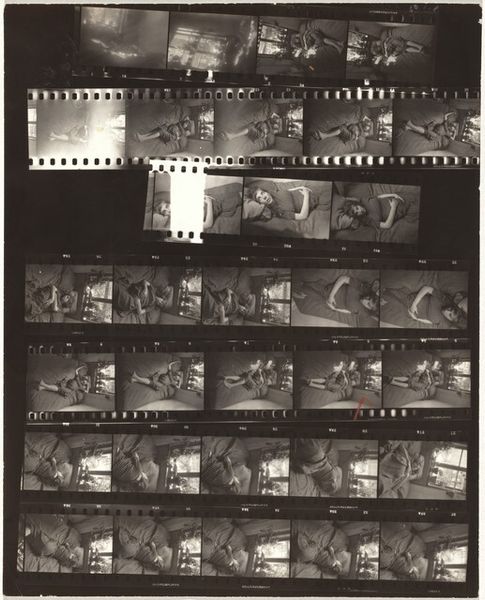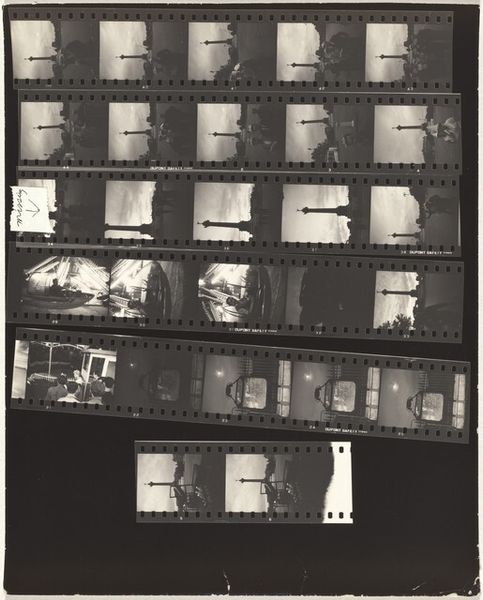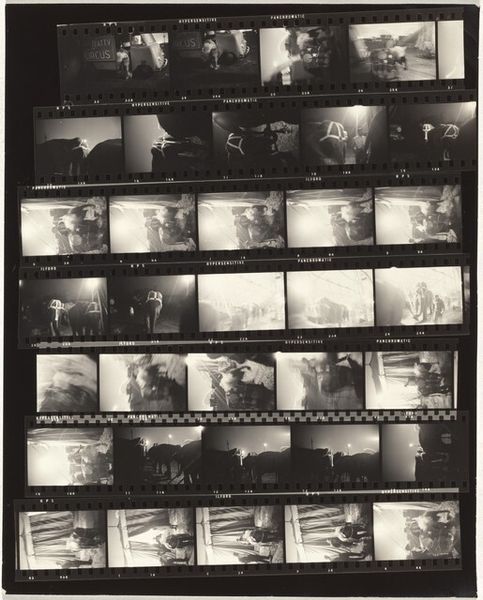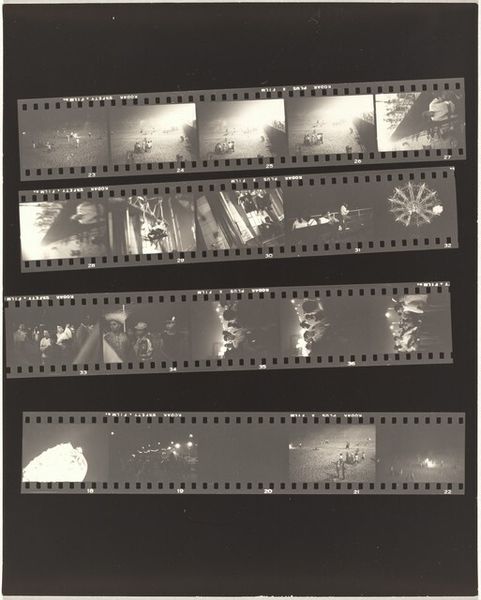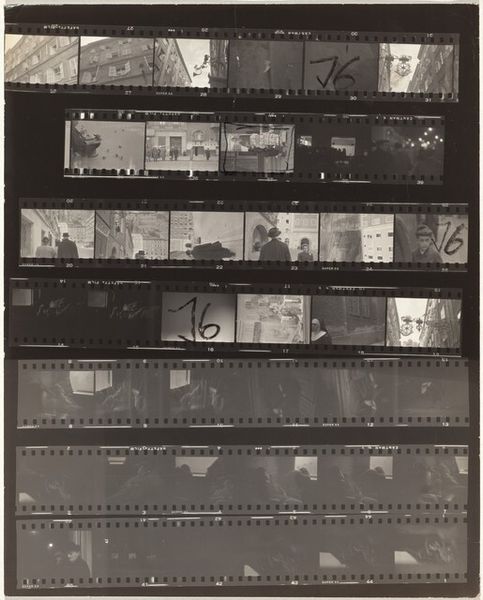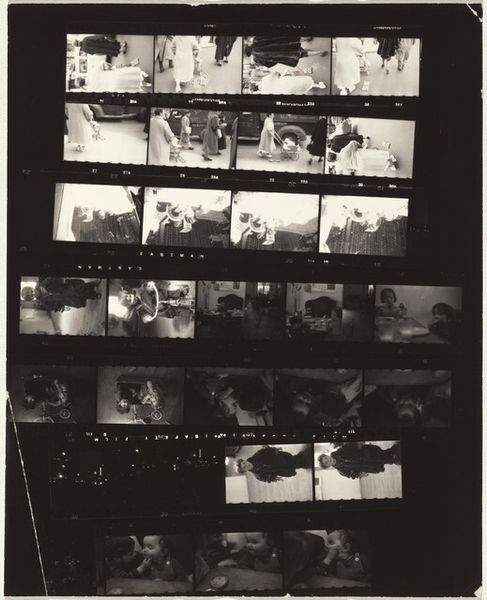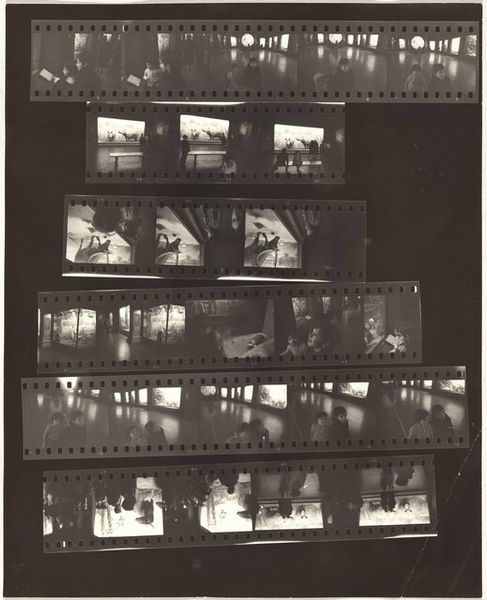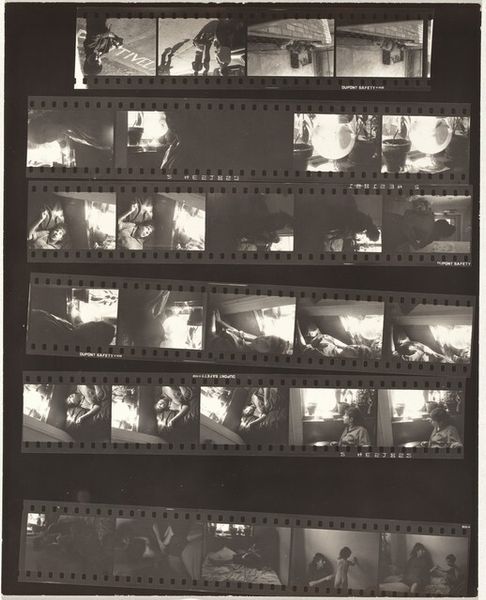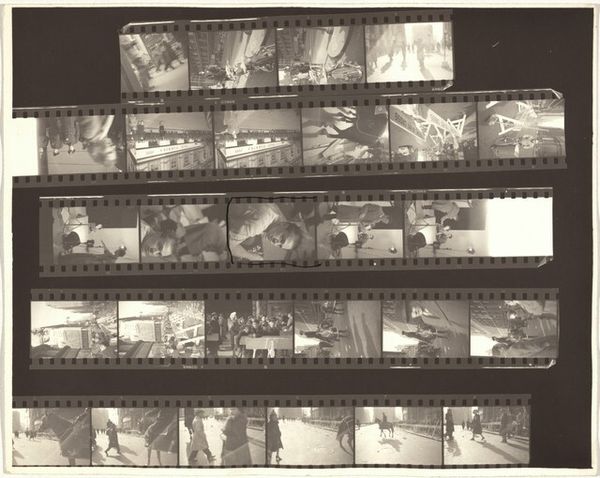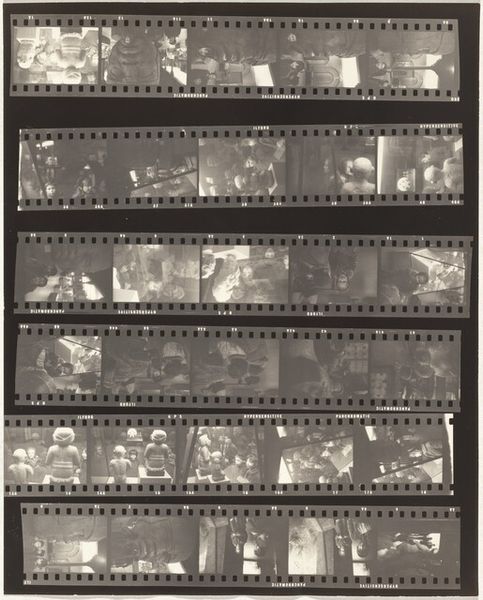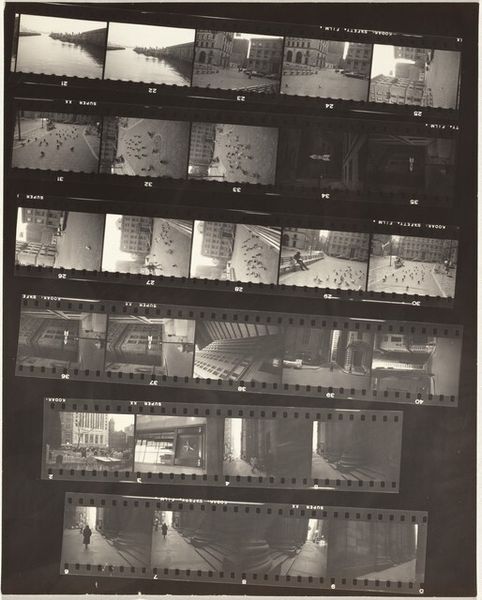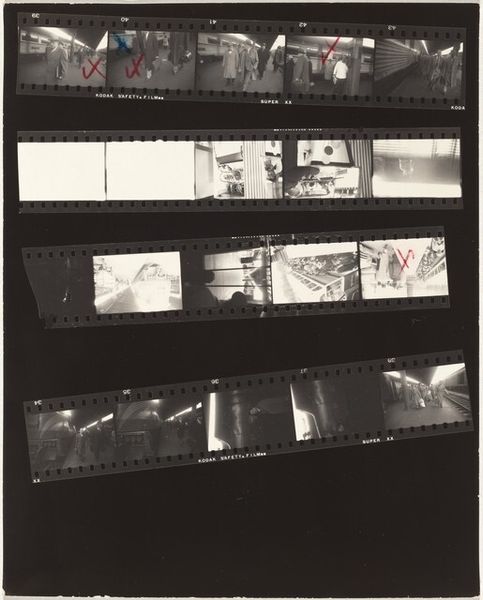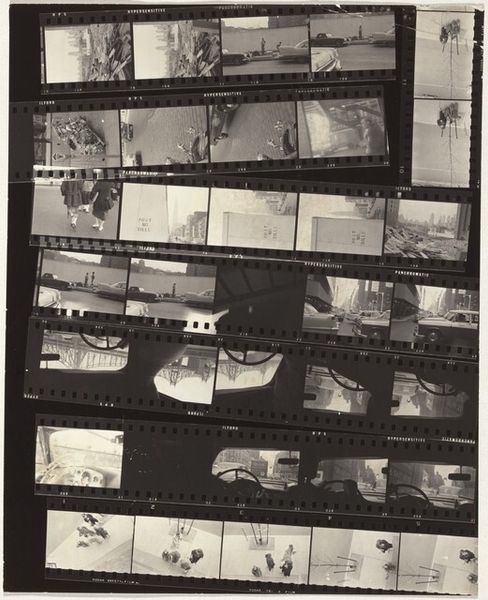
photography, gelatin-silver-print
#
film photography
#
archive photography
#
street-photography
#
photography
#
gelatin-silver-print
#
monochrome photography
#
monochrome
Dimensions: overall: 25.1 x 20.2 cm (9 7/8 x 7 15/16 in.)
Copyright: National Gallery of Art: CC0 1.0
Curator: This is Robert Frank's "Coney Island 1," a gelatin silver print from 1960. What's your first impression? Editor: Fragments. It feels less like a cohesive statement and more like peering into the artist’s developing process. Almost voyeuristic, given how the film strips are arranged. Curator: Absolutely. He offers us his raw, unfiltered observations. You can discern several thematic throughlines just in these few strips. Look, you've got snippets of people, objects, all imbued with this air of American everyday life at the time. Notice the windmill…a motif of freedom or perhaps a broken promise? Editor: The high contrast emphasizes the gritty feel—exacerbated by the materiality itself, seeing the sprocket holes and film markings. The haphazard arrangement adds to a sense of immediacy; it defies traditional composition. There’s almost a deliberate attempt to avoid something traditionally beautiful. Curator: Frank was fascinated by revealing unspoken realities. He used Coney Island, among other places, as a stage for his commentary on race, class, and the American dream—or the illusion thereof. I wonder if it’s showing cultural dissonance and alienation after World War II. He doesn't seem particularly concerned with capturing joy. Editor: He privileges process over perfect image making. See the imperfections in printing too… the light leaks. All those “errors” are choices in favor of truth. In a way, it makes a powerful counterpoint to idyllic mid-century imagery that was also circulating heavily at this time. Curator: Right! This work became influential *because* it was unconventional. It captures cultural undercurrents. He shows how appearances deceive. Consider, too, that many interpreted his photography as critical, even anti-American, yet today, it’s considered an unflinching document of its time. It really begs us to ponder who decides how we’re seen, remembered, represented. Editor: This print acts almost like a meta-narrative, revealing not only the subjects, but also, crucially, Frank's working methodology and perhaps the whole ethos of his documentary impulse. Curator: Indeed, this piece reminds us of photography’s complicated role: documenting, interpreting, perhaps even subtly shaping, our understanding of our own cultural narratives. Editor: It gives the idea of the indexical quality of photography a further turn: an index, if you will, of other indices, layered in tone and technique.
Comments
No comments
Be the first to comment and join the conversation on the ultimate creative platform.
